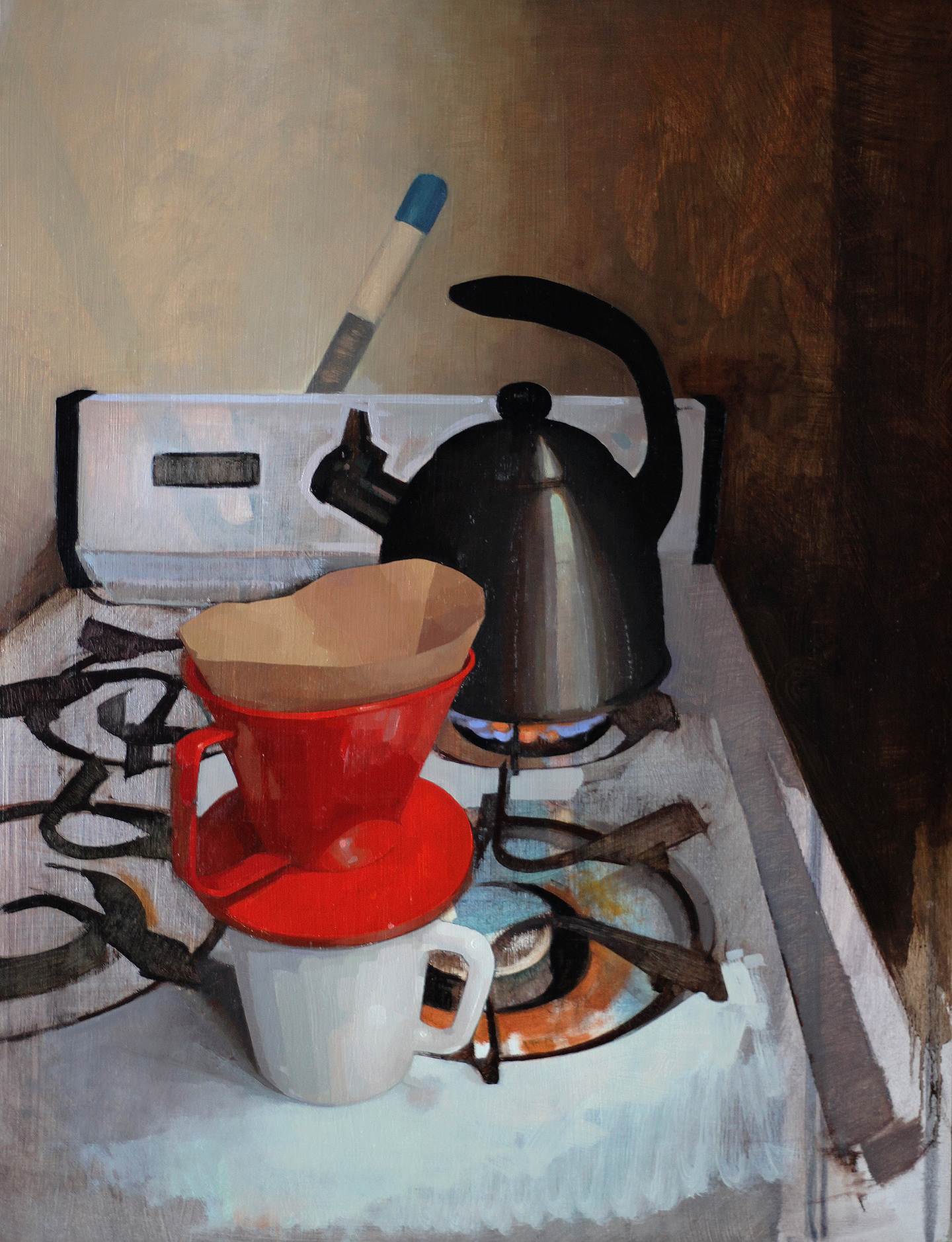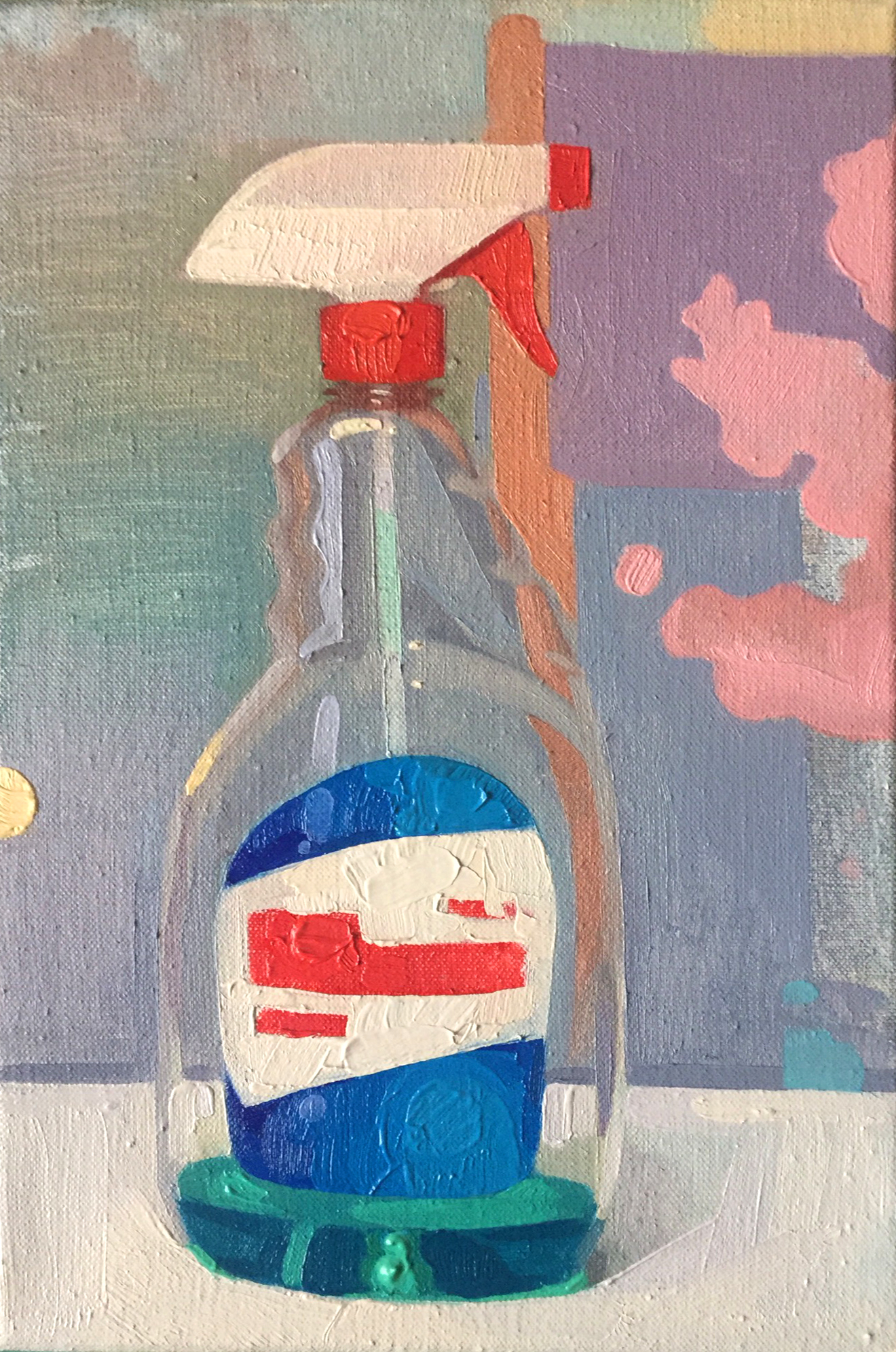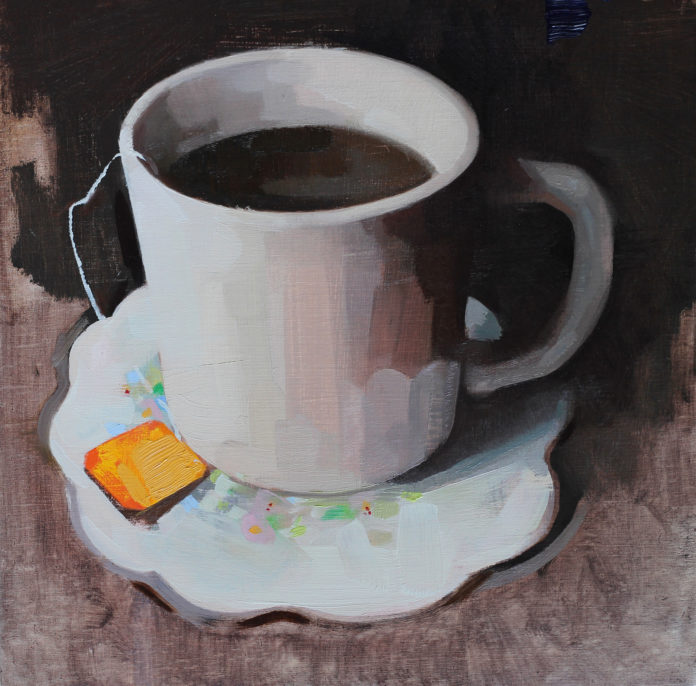If painting feels like a tightrope walk, try focusing on limited palette color mixing, drawing techniques, and getting over some of the preconceived notions about the “rules” of art.
Learning Through Limitations
BY FELICIA FORTE
Originally written and published in 2016
Several years ago I found myself unsatisfied with my work. Every painting was like a tightrope walk—I was holding my breath.
To begin with, color was an issue. I was excited to use color in my work, but I was overdoing it. All the color everywhere is like no color anywhere. I had been taught to paint with the Impressionist Palette—no black and several options of each primary color. I had seen other artists working with the Zorn Palette so I decided to pare down from the Impressionist Palette and try it. The Zorn Palette is a limited palette of three primary colors—Red, Yellow and Blue, and consists of Cadmium Red, Yellow Ochre, Ivory Black and Titanium White (the Ivory Black is cool, and works as the blue).
The first large painting I painted with this limited palette was titled “The Clearing.” In my reference the grass was bright green. I struggled to make it look green in my painting, and eventually settled for dead grass. Next, I painted “Going Back,” and I was determined to do better. I realized that I was adding too much white and that it was un-greening my grass. I tried just black and yellow. I had to keep adding more and more yellow until it was mostly yellow with just a touch of black. THAT was green.
Seems obvious to me now, but back then the fact that I was able to take control, and solve my problem, was blowing my mind.

Next, I wanted to improve my graphite drawings. I would always start well enough and at some point would lose focus on the whole. I might draw a beautiful eye, but put it in the wrong place. UGH! It was frustrating, so I began to create and follow a strict process, a process that was based on the advice of the best teachers I’d had. A process is a limitation of choices. It can be comforting, and something to fall back on if you get into trouble.
First, I would create the shapes of the drawing with all straight lines. No filling in of shadows was allowed until the entire drawing had achieved likeness and pleasing composition. Then, I would fill in all the shadows/darks with an even and medium-valued pass. After that, I would choose one small section of the drawing to bring to finish, and when it was satisfactory I would slowly and methodically take that degree of finish over the rest of the drawing.
Drawing with all straight lines increased my accuracy in likeness. Waiting to fill in made me responsible to think about the whole and even to learn what I thought a good composition was (no more wishy-washy parts at the bottom, or heads not quite fitting at the top). Uniformly filling in all the darks helped me to keep my values organized, which I think is THE most important thing to learn in representational art making. It was difficult to be patient, but through the repeating of this process and slowing down, I gained agency and ownership of my work.

Preconceived Notions About Painting and Drawing
Before taking control of my own continued education by instituting these periods of limitation, I had had notions about painting that were based on the idea that it was mysterious, maybe even magical.
I thought that the process had to be complex and could only be understood or developed if you had “it”—some innate quality. There were also all of these “rules“ that I kept hanging onto without understanding them.
They were the absolutes that I’d heard in classes—“never use black;” “darks must be painted with transparent colors;” “don’t use colors straight from the tube;” “don’t add white unless you have to,” and many more.
Now, as I teach I realize that there are reasons instructors throw these “rules” around—they are oversimplifications of important guidelines or helpful hints, but it’s lazy not to explain them! As students we are listening and recording things literally (or at least I was).
Limiting myself in the ways that I’ve described freed up space in my brain and empowered me to teach myself, and thus to begin to understand the reasons for the rules.
After years of teaching I realize that limitations have been my greatest teachers, and so I do my best to teach my students to assess their own weaknesses and use exercises in limitation to work on them. Here are a few ideas:
- Focusing too much on details? Get rid of all of your small brushes for a while.
- Over-painting? (Ever have about ten similar paintings on top of each other on one canvas?) Give yourself a time limit. Can’t stop even when the timer goes off? Paint flowers that will die, food that will rot, models that have to go home; don’t work from photos.
- Having troubles with values? Paint in black and white.
- Not spending enough time on getting the drawing accurate? One look/One line: only allow yourself to make one mark after each observation of your subject.
Keep Growing
I stuck with the Zorn Palette for two years before I began to slowly add more colors back into my palette. To begin expanding I would choose a subject with a color that couldn’t be mixed with just the Zorn Palette (like electric blue) and I would try to pick just one tube of color to expand my palette with. In some of my paintings, for example, I was able to add just Thalo Blue.
What I missed the most during the two years of Zorning was being able to make a cool purple, so for alla prima portrait I began to premix Alizarin Crimson, Ultramarine Blue and white, which I found gave me everything I wanted. Eventually I stopped mixing them, and now my basic palette consists of Cad Red, Yellow Ochre, Ivory Black, Titanium White, Alizarin Crimson, and Ultramarine Blue. (I dropped the Thalo after adding ultramarine—it’s strong stuff!). If I need to I can easily add a new color if a painting requires it.
Use the limitations until you have consistently good outcomes, and then let yourself experiment again. Have fun!
P.S. If you decide to try a limited palette I suggest you make that color chart. Having proof of the possibilities in front of you will ease the transition (just Google it and you will find lots of examples).
Learn more about Felicia at: www.feliciaforte.com
Related > Read about color charts and learn more about color mixing at our sister site, OutdoorPainter.com.
Related > 7 Insta Limited Palette Artworks





